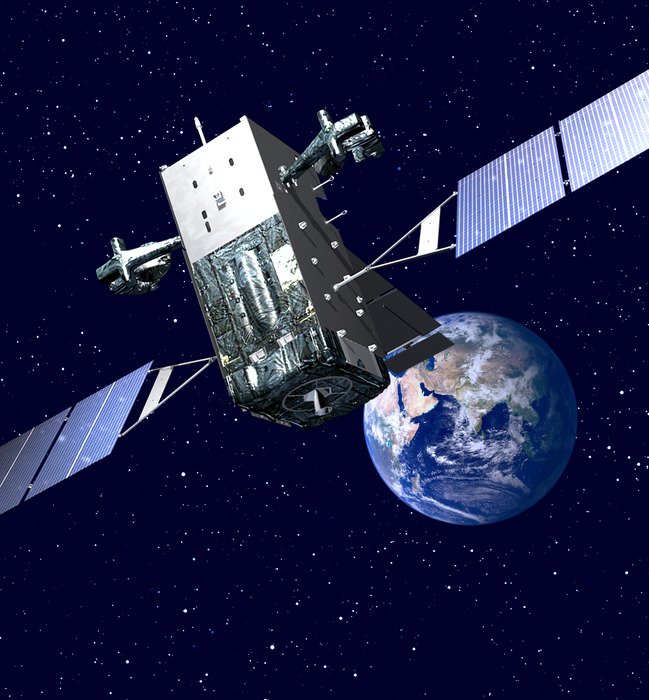An artist’s rendering of the SBIRS GEO spacecraft. (Courtesy Lockheed Martin)
SUNNYVALE, Calif., July 2 (UPI) -- The United States' futuristic missile alert system operating from outer space moved forward with Lockheed Martin's delivery of the third "highly elliptical earth orbit" satellite payload system.
A further fourth HEO is due to complete the USAF order, which will be yet another step toward initiating the Space Based Infrared System. SBIRS is designed to give the U.S. military a global capability to detect and monitor a ballistic missile launch from anywhere.
"The SBIRS program delivers timely, reliable and accurate missile warning and infrared surveillance information to the President of the United States, the Secretary of Defense, combatant commanders, the intelligence community and other key decision makers," Lockheed Martin said.
The aerospace manufacturer said the system, in addition to enhancing global missile launch detection capability, would support the ballistic missile defense system, expand technical intelligence gathering capacity and bolster situational awareness for fighters on a battlefield.
SBIRS will include what Lockheed Martin calls "a resilient mix of satellites" in geosynchronous earth orbit, hosted payloads in HEO orbit and ground hardware and software.
As an integrated system it will support multiple missions simultaneously and provide robust performance with persistent coverage worldwide.
"Our full attention is now on completing HEO 4 and GEOs 3 and 4," Jeff Smith, vice president of Lockheed Martin's Overhead Persistent Infrared mission area." The focus, he said, was on "delivering unprecedented infrared surveillance capabilities to our warfighters."
SBIRS includes four HEO payloads, four GEO satellites, and ground assets to receive, process and disseminate the infrared mission data.
The first two HEO payloads were delivered in 2004 and 2005 and have provided mission performance surpassing specifications. Prior to its delivery, the HEO 3 payload successfully completed rigorous environmental and functional testing to demonstrate performance in family with HEOs 1 and 2.
"This is the third SBIRS HEO payload delivery and the first from the SBIRS Follow On Production Program," said Steve Toner, vice president of Northrop Grumman's Military and Civil Space business unit. "Its sensor will enhance the high quality of information being provided to our warfighters by the SBIRS constellation."
Air Force Space Command declared GEO 1 operational May 17 and recommended Integrated Tactical Warning and Attack Assessment certification of the asset to the U.S. Strategic Command.
The second USAF SBIRS GEO satellite was launched May 19 and has been delivering "outstanding infrared data as part of on-orbit testing." Lockheed Martin has also received contracts to procure long-lead items for GEOs 5 and 6.
The new satellites will replace the existing Defense Support Program fleet, Defense Industry Daily said on its website. The new satellites' infrared sensors have thrice the sensitivity of DSP and twice the revisit rate, while providing better persistent coverage.
Unfortunately, it said, the program has been beset by massive cost overruns on the order of 400 percent, technical challenges that continue to present problems and uncertainties about performance.
Despite those problems USAF is proceeding with the program and has terminated potential alternatives and supplements, Defense Industry Daily said.















